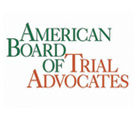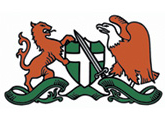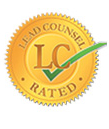Rear-end accidents account for about 29% of the total crashes that result in significant injuries and death. These accidents usually catch the rear-ended driver by surprise, leaving no room to react or avoid the collision.
Los Angeles Car Accident Attorney helps victims of rear-end collisions to establish the at-fault party, sue that person or entity, and recover the damages that resulted from the accident. We are a personal injury firm with a proven record of settling cases at their fair value – we work on our cases to get the best outcome for the client, not the easiest way out.
Causes of Rear-End Collisions
Rear-end collisions occur mostly due to the tailing driver following too closely or driving while distracted. There are other reasons outside these, such as drunk driving and bad weather, which influence roads and users’ safety.
One of the important steps in recovering from an accident is to determine its cause. That way, you can then determine the party responsible for that fault or condition, or acted negligently without due consideration of the danger posed by that condition such as speeding during a storm.
Here are the common causes of rear-end accidents:
1. Distracted Driving
Distracted driving is one of the leading causes of any type of vehicle accident. The common distractions among drivers include operating the radio, eating, grooming, talking to passengers in the vehicle, events outside the vehicle, answering the phone, and texting.
These distractions are problematic for all drivers as they take the mind, eyes, and hands of driving. The negative effect of distractions is common among teenage and inexperienced drivers.
Some distractions could lead to the offender's citation or conviction, making it easier to prove that the defendant was at fault for the accident.
2. Following too Closely
The law requires drivers to leave sufficient space between themselves and the leading vehicle to allow sufficient room to stop. However, most vehicles ignore this rule and keep the shortest distance possible with the lead vehicle, especially when traffic is heavy.
Such closeness is risky as neither driver has the room to respond to an emergency such as a passenger darting in front of the car or the leading driver making a panic stop.
Rear-end collisions that occur due to following too closely are usually the fault of the tailing driver.
3. Drunk Driving
Alcohol is a common social drink in California, making it highly likely that drivers will drive with alcohol in their system. Even drivers who have not exceeded the legal limit show symptoms of impairment from alcohol consumption, such as reduced response time, reduced judgment, and uncoordinated motor skills.
Police officers usually conduct breath tests for all drivers who were involved in an accident. You could use this information to support your claim even if the defendant is not found guilty of driving under the influence.
4. Speeding
Speeding reduces the response time a driver has and increases the distance the car has to stop. These two factors increase the risk of bumping into another car.
Speeding is common where drivers engage in road rage, or when the traffic is low. You can establish that a car was speeding based on the marks on the road and eyewitness statements. The impact on your vehicle can also tell much about the speed the tailing car was driving at.
5. Vehicle Defects
Vehicle defects that contribute to accidents include brake and steering failure. Vehicles are made of multiple parts that require every part to work efficiently to ensure a safe ride. However, if any of the components are crucial to the functioning of the vehicle malfunction, an accident might occur.
Vehicle defects arise from design and manufacturing flaws, making the manufacturer responsible for the injuries you suffered.
6. Weather
The weather directly affects how drivers behave on the road and the safety of the roads. For instance, a heavy storm can make the road slippery and reduce visibility, thus increasing the risks of accidents.
Fog is another condition that reduces visibility and increases the occurrence of rear-end accidents.
Although no one can control the weather, the law expects motorists to exercise reason and caution when driving during bad weather conditions. For example, doctors should reduce their speed when driving in a storm.
What to Do After a Rear-End Collision
Although a rear-end accident could catch you by surprise, you need to learn the steps you should take if you are involved in one. These steps prevent criminal consequences such as charges for hit and run and help you build your civil case should you suffer injuries due to another person's negligence.
The first thing to do is stop at the scene of the nearest and safest place to the scene. California laws expect you to stop at the scene of the accident and exchange information with other parties involved in the accident.
Once you stop, check yourself for injuries, and call 911. Provide information about the nature of the accident, its location, and whether there are casualties). Ask for help if you need it or offer help to those who require it, regardless of the party responsible for the crash.
The police will arrive at the scene to collect evidence; therefore, make sure you do not interfere with the scene. You should provide help to the police, such as answering questions about the accident. However, do not admit fault. Statements such as claiming fault for the accident could be used against you even if the other party contributed to the accident.
Request a copy of the police report so that you have an official record of the accident. These reports contain the possible cause of the accident and the marks or evidence left at the scene.
Exchange information with all the parties involved in the accident, including the other driver, passengers, and pedestrians who could have been injured. This information includes your name, address, insurance information, and vehicle registration number.
You should also ask for contact information of witnesses to the accident. Record their version of the accident and their contacts to reach them in the future if you need their testimony.
Collect any evidence you can find at the scene of the accident. This will include taking videos and photographs of tread marks on the road, the state of the vehicles involved in the accident, details such as the weather injuries, positions of the cars, and debris such as broken glass from the vehicles. Make sure to timestamp your videos and photographs.
Write what you remember from the accident, including the speed and your actions at the time of the accident. Since it is a rear-end accident, you might not have noticed the driver's behavior before the crash. However, if you had seen the driver before, for instance, he was following too closely even if you tried to move faster, you could include that in your documentation.
Get medical care immediately. Most people fail to be checked immediately after an accident to their detriment. The longer you wait to get a medical check-up, the worse your symptoms could become, and the harder it will be to link the injuries to the accident.
The adrenaline rush you get when you are involved in an accident also masks the pain you might feel, until later when you have calmed. During the doctor’s check-up, mention that you were involved in an accident so that he or she can conduct a thorough investigation checking for the common injuries related to vehicle accidents.
Make sure that you follow the advice of your doctor, including taking all the medications as required. Failing to adhere to the doctor's prescription could weaken your case by showing that you lack a commitment to your recovery or contribute to the worsening of your symptoms.
Contact an attorney as soon as you can. Personal injury attorneys are crucial to recovering your compensation if you are injured or lose a loved one to a rear-end collision. These lawyers have the education, skills, and expertise to handle the legal proceedings.
They can collect evidence more efficiently, conduct research, contact expert witnesses, and negotiate your case with competence and professionalism. By going it alone, you deny yourself the chance to recover the fair value of your claim.
You must also notify your insurance company that you have been in an accident regardless of the party at-fault. The requirement to notify the insurance company if you are in an accident depends on your contract with that company.
Insurance companies conduct their independent investigation of the accident to determine whether to compensate you. Failing to inform the insurance company could lead to the denial of your claim, increased premiums, or cancellation of your policy.
Finally, keep the necessary documentation together. Organize your receipts, evidence, recovery diary, and treatment plans you have gone through due to the accident. These will back your claim up and better the chances of a fair settlement. Do not count on your mind to remember everything, write it down, and keep it organized. Lastly, make copies of all the documents or evidence you have to keep backup just in case you lose some pieces.
Common Injuries from Rear-End Collisions
The common injuries you could suffer from a rear-end collision include whiplash, head injuries, back and spinal injuries, internal bleeding, injuries to internal organs, and knee injuries. These injuries could show their symptoms immediately or days after the accident. Therefore, make sure you visit the doctor immediately after leaving the accident scene.
1. Whiplash
Rear-end collisions are a common cause of whiplash injuries. When your car is rear-ended, the impact forces your body forward and backward suddenly and violently, which could strain your neck muscles.
The rear-ended driver usually has no time to brace for impact or realize that he or she is about to be rear-ended. Therefore, the crash finds him or her in a state of muscle relaxation, which creates enough room for a violent and sudden movement of the head and neck.
Whiplash injuries could lead to pain and soreness and, in extreme cases, chronic pain.
2. Back and spinal injuries
The back and spine give your whole body support, even when you are sitting in a car. A car accident results in the compression of the spinal column resulting in back pain and spinal injuries.
You can recover from some injuries or live with complications such as consistent lower back pain. In severe accidents, you could become bedridden or partially or fully paralyzed due to spinal injuries.
3. Head Injuries
Rear-end accidents force the drivers and passengers of both vehicles forward. Your head could hit the steering column or other parts of the car, causing serious injuries. If you were not wearing a seatbelt or it was defective, you could be ejected from the vehicle and hit your head against the road.
Head injuries can range from concussions to traumatic brain injuries. The severity and recovery from these injuries will vary depending on each case. For some people, these injuries could be deadly, while others will be dependent on medical care for the rest of their lives. Head injuries could also be hard to detect, especially in the days following an accident.
4. Injuries to Internal Organs
The impact of a rear-end crash could lead to the abdomen hitting the dashboard or the steering column, causing damage to your internal organs. The common organs that are likely to suffer injury in an accident include the liver, spleen, kidneys, and broken ribs.
In the case of broken ribs, you could suffer pneumothorax if a rib perforates the lungs. Pneumothorax is a condition where air from the lungs floods the chest cavity.
5. Internal Bleeding
Internal bleeding happens when the impact of the crash damages or severs your blood vessels. Internal bleeding can occur in different places of the body, and often with fatal consequences if not detected fast.
Brain bleeding is the most severe form of internal bleeding, preventing oxygen from reaching your brain cells. Brain bleeding often results in permanent brain damage.
Another deadly form of internal bleeding occurs when the abdominal aorta ruptures resulting in an abdominal aorta aneurysm.
Damage to the spleen could also flood your abdomen with blood, which is usually a fatal condition.
Internal bleeding and damage to internal organs often occur together and kill easily because few people notice the signs. Some of the signs of internal organ damage or bleeding include:
- Dizziness
- Severe weakness
- Low blood pressure
- Severe abdominal pain
- Chest pains
- Nausea
- Passing out
- Vomiting
- Diarrhea
- Blood in urine
6. Knee Injuries
Knee injuries are a common result of rear-end accidents. They have debilitating effects in the long term, which could make walking, driving, or running difficult. You could also develop chronic knee pain from these injuries. The common knee injuries include:
- Dashboard knee injuries occur when the knee hits against the dashboard in a rear-end collision. These injuries can cause breakage of the kneecaps or bruises.
- ACL tears due to overextension of the knee. ACL tears are serious injuries that might need surgical correction. The common symptoms of the injury include a popping sound and rapid swelling of your knee.
- Meniscus tears are less serious than ACL tears and tend to show symptoms days after the accident. You might experience symptoms such as swelling, pain, and stiffness. Most meniscus tears heal on their own, but you might need surgical repair for deeper tears.
Recovery from knee injuries depends on the nature of the injury. ACL tears, for instance, can take nine months or more to heal.
Determining Liability in Rear-End Collisions
You cannot have a personal injury case until you establish the party or parties you will be suing for your injuries.
Determining liability for a rear-end accident can become a complicated process. Liability usually depends on:
- The behavior of both drivers: for example, if the leading driver made a panic stop, he or she might cause the tailing driver to rear-end him or her. Distractions by either party could also contribute to the accident, and both parties could be at fault for the accident.
- The weather and road conditions at the time of driving
- The number of vehicles involved in the crash – you could be involved in multiple vehicles rear-end accidents where establishing fault will depend on the trigger that started the chain reaction.
The tailing driver is usually at fault in most rear-end collisions. However, other parties might be responsible, under these circumstances:
- The leading driver accelerates while reversing.
- The leading driver brakes suddenly.
- The rear-ended car stopped in the road.
- The leading driver fails to turn on a hazard light if the vehicle is experiencing a mechanical problem.
- Defective car parts which make it impossible for the tailing driver to stop
- Road rage
- The leading driver intentionally tries to get hit (especially for insurance fraud)
Liability in California car accident laws follows the theory of negligence and the duty of care. Motorists owe each other the duty of care to ensure that roads are as safe as possible.
The duty of care, for instance, requires that the leading driver turns on hazard lights when braking, turning or changing direction to alert the tailing driver. The tailing driver must also maintain a safe distance behind the car in front to provide enough room for response in case of an emergency.
Therefore, it could be possible for both drivers to be partially responsible for the accident, in which case, California’s Comparative fault laws apply.
Your attorney can use other methods to determine the party who was at fault. These include:
- Requesting an evaluation of your car to check for defects
- Interviewing witnesses to the accident
- Determining the weather and road conditions at the time of the accident
Once you have established fault, you can proceed to file a claim against the at-fault party to recover compensation for the damages you suffered.
Compensation From a Rear-End Accident Claim
Perhaps the question that comes to mind once you determine that the other person was at fault is the value of the case and recovering these damages. Hiring a personal injury attorney will save you the trouble of having to learn the process of filing a lawsuit, gathering the relevant evidence, negotiating the claim, and obtaining a fair settlement for your case.
Most people settle for the insurance company's first offer, which often denies them the chance to settle the case for what it's worth.
Once you receive compensation from the insurance company, you lose the right to sue for the same damages. Therefore, you need to have a legal representative working on your behalf, especially if yours is a high-value case.
Some of the damages you can recover include:
- Medical costs related to the accidents, including future medical costs if you suffered permanent injuries
- Lost wages
- Lost earning potential
- Property damage
- Pain and suffering
- Punitive damages (at the discretion of the judge)
You might need an economic expert to help you establish the value of your claim. Such experts have the expertise in calculating the value of projected expenses such as the cost of treating TBI in the future, the income a young person could have earned over his or her lifetime, and the value of future lost benefits such as retirement benefits.
You will also need to present evidence such as:
- Receipts for medical bills and other expenses related to the accident
- Medical records for preexisting conditions that worsened due to the accident
- Your tax documents, salary slips to show your income before the accident.
The final step in recovering the compensation for your injuries is knowing when to settle. Settling too soon could lead to a settlement lower than the value of your case. Your attorney can help you estimate the value of the case and lay down the groundwork for fair negotiations and settlement.
Find a Car Accident Attorney Near Me
A rear-end accident can change your life in many ways; you might be unable to work, walk, or engage in the activities you previously enjoyed.
These changes can also affect your health and finances, especially if you are facing medical bills but lack an income source.
Our attorneys at Los Angeles Car Accident Attorney focus on helping victims of rear-end accidents obtain compensation for the injuries they suffer.
Call us at 424-237-3600 for a free consultation.






